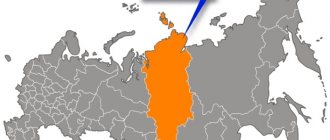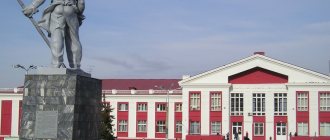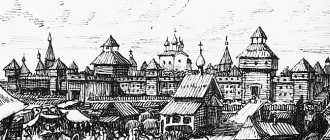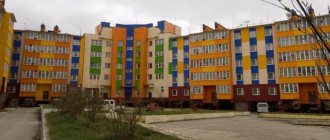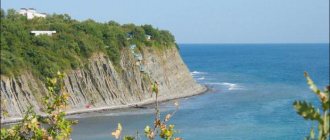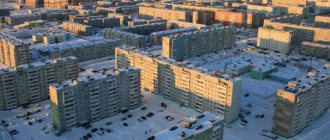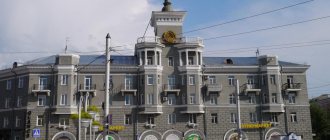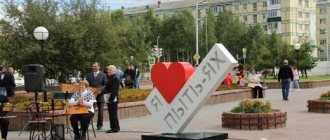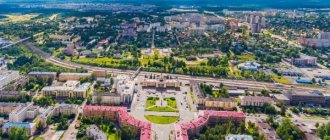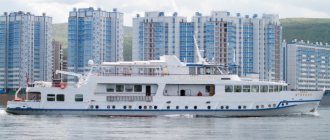In the extreme northeast of Russia is the Chukotka Autonomous Okrug. According to 2022 data, approximately 50,288 people live in this territory of 721,481 square kilometers. Chukotka has a very harsh climate, because winter lasts for 10 months, and the air temperature often hovers around -30 degrees Celsius. Local residents are mainly engaged in livestock farming, plant cultivation and mining.
The inhabitants of Chukotka are usually called Chukchi - this people have their own culture with their own customs. These people are quite different from us, and what is the norm for them may seem like a very strange phenomenon to residents of large cities. Within the framework of this article, I propose to consider several interesting features of the inhabitants of Chukotka. Some facts may be quite unexpected.
History of the region
Chukotka is wild and absolutely exotic. Whales, the ocean, fjords, fishing, hunting, bears and untouched nature - you will get tired of listing all the points of attraction that exist here. Take a look at our travel guide to understand that Chukotka is a must-visit.
Chukotka is a harsh and unruly region. It’s as if these places were specially created to test a person’s strength. Traveling through the region requires a certain amount of courage and determination. Time seems to flow differently here. Chukotka teaches patience and the ability to wait. And most of this region still belongs to wild nature, and not to people. The capital of Chukotka is the settlement of Anadyr. The Chukotka Okrug was formed on October 10, 1930 by a resolution of the All-Russian Central Executive Committee. It included:
Andyr
- Anadyr;
- Eastern tundra;
- Chaunsky district;
- Markovsky district;
- Western tundra;
- Chukotka region.
The highest density and population is observed in such cities of Chukotka as Anadyr (15 thousand people), Bilibino (5 thousand people) and Pevek (4 thousand people). They are located at a considerable distance from each other.
No one knows exactly how this autonomous region was formed. There are several versions. The first states that the name was assigned to the region because the indigenous population is the Chukchi. If you believe the second version, the peninsula was named after one of the expedition members - Chukovsky. There is a third one, according to which the district received this name due to the fact that it is washed by the Chukchi Sea.
The first population in this region appeared 8 thousand years ago. Previously, people settled North America through the Chukotka Peninsula. Several centuries ago, this autonomous region was inhabited by Yuits and Shelags, but today the indigenous population is the Chukchi.
This subject appeared on the map only in 1803, and in 1648 Chukotka was discovered by Dezhnev during one of his expeditions. In 1660, the Anadyr fort was formed. Then a new one was built in place of the old one. Unfortunately, during the flood the fort was destroyed. Previously, this territory belonged to the Kamchatka region, and later became part of the Khabarovsk Territory.
In 1994, the government approved the first flag of Chukotka. The coat of arms is presented in the form of a purple shield, in the center of which is a polar bear.
Civilization versus savages
The development of the Far East by the Russian Empire was difficult. There were many negative factors: the distance from the civilized world, the lack of roads, and the stubborn natives. But the Chukchi caused especially a lot of trouble.
In 1727, the captain of the dragoon regiment Dmitry Ivanovich Pavlutsky arrived in distant Chukotka. He received four hundred soldiers and an order that stated that he needed to impose tribute on all local residents. It may seem that four hundred warriors is too few, but it is not. In fact, in those times and in those lands, such numbers were a formidable force, because in Chukotka at that time there were a total of about ten thousand aborigines warring among themselves.
Pavlutsky was not the most important commander; above him was Colonel Afanasy Shestakov. He was a Cossack, a brave man, but too straightforward. Instead of diplomacy, Shestakov preferred brute physical force. This approach to the development of the Far East worked only at first. The aborigines (Karyaks, Evens and others) recognized the authority of the Cossacks, but were extremely reluctant to support him. Afanasy Fedotovich forced them with his fists. Pavlutsky did not share this approach. He had known Shestakov for a long time and they had an extremely negative attitude towards each other.
Dmitry Ivanovich and Afanasy Fedotovich, together with the soldiers, set out from Tobolsk. They needed to get to Yakutsk, that is, to cover about six thousand kilometers. They coped, but the relationship was completely ruined. The conflict ended with Shestakov and his people simply silently leaving. He set out to conquer the Pacific coast, firmly believing that several dozen Cossacks and a hundred “volunteers” from the Yukaghirs, Yakuts and Evens would allow him to complete this undertaking.
First, Shestakov met with the Koryaks. The natives unexpectedly refused to pay the established tribute to the Russian Empire, considering it too burdensome. In addition, the Koryaks thought that the Russian army would not come to them. But they were wrong. Shestakov, with his characteristic anger, defeated the aborigines and once again imposed tribute on them. He then made a short stop in Okhotsk, after which he moved north. And in March 1730, the Cossack met a large (several hundred) Chukchi army. They were not subjects of the Russian Empire and, accordingly, did not pay tribute. Afanasy Fedotovich decided to fix this. He was not embarrassed by the fact that the enemy army was several times larger than his. He was used to the fact that the aborigines never put up fierce resistance. It was easy enough to intimidate them with firearms. The Chukchi did not flinch. They quickly dealt with Shestakov's army, killing almost all the soldiers. Afanasy Fedotovich himself also died. And the satisfied natives, having plundered the convoy (they captured guns, grenades, armor and a banner), went on a raid on the Koryaks.
Soon they learned about Shestakov’s death in St. Petersburg. And from there the order came: from now on, Pavlutsky became the main one in the Chukchi campaign. In the early autumn of 1730, Dmitry Ivanovich reached the Anadyr fortress. At that time, it was the only Russian military base on the entire peninsula. Ostrog became the place from which Pavlutsky periodically carried out punitive campaigns against the Chukchi. Dmitry Ivanovich was the Yakut governor, to whom all the peoples of Chukotka were subordinate, except, of course, the Chukchi.
Over the course of two years (from 1744 to 1746), the major went with the army several times to beat the aborigines. Pavlutsky was well aware of what a strong and self-confident opponent he was dealing with. After the death of Shestakov, Dmitry Ivanovich began collecting information about the mysterious people, the mere mention of which sent the Koryaks, Evens and other aborigines into panic.
"Real people" and savages
Shestakov found out that the Russian Empire had already come into contact with the Chukchi, although it was a very long time ago - in 1641. Then the natives suddenly attacked the convoy carrying tribute. The raid was successful, unlike the punitive expedition of Semyon Dezhnev. He simply did not know where to go and with whom to fight. Then, however, the situation became clearer, Dezhnev found out who was opposing him. He decided to act according to a well-established scheme that worked flawlessly with all the peoples inhabiting the Far East. The Cossacks simply kidnapped the leader’s relatives, and then demanded submission from him. But it didn’t work with the Chukchi. Toyons (leaders) believed that life was worthless; their priority was military honor. The local women were of no use either. They simply went to all sorts of tricks to commit suicide. Most often, they simply refused to eat and died of hunger.
Pavlutsky also learned that the Chukchi do not surrender. In case of defeat, the warrior asked to be killed. Old people made the same request to their closest relatives when they realized that they were becoming a burden to them. The Chukchi considered themselves “real people”, and everyone else – ordinary wild animals. They believed that after death they go to a world where “heavenly people” live. Also among the Chukchi, the practice of suicide due to an unsuccessful hunt or some other “shame” was widespread. Harsh living conditions hardened the aborigines, turning them into tough people who were not afraid of anything. But they were afraid. All the other peoples of the peninsula were in panic, considering the Chukchi a real natural disaster.
The leaders of the Yukaghirs, Evens, Itelmens, Koryaks and Yakuts many times warned Pavlutsky against war with the Chukchi. They told him terrible stories about how “real people” skillfully handled spears and knives made from whalebone, how strong their armor was, how cunning their warriors were. Pavlutsky was especially impressed by the stories about the ambushes set up by the Chukchi. They could wait for the enemy for several days, merging with the surrounding terrain. And not a single scout has ever been able to discover them. The leaders also said that spirits always help the Chukchi. The fact is that when retreating, the Chukchi were able to literally disappear into thin air in a matter of seconds. It is clear that this could not have happened without the intervention of otherworldly forces.
But from all these stories Pavlutsky managed to extract important information. The Toyons unanimously insisted that the Chukchi were treacherous and cruel only in war. They never touched the negotiators, considering this unworthy of a warrior. Dmitry Ivanovich decided to use this nobility.
But he was unable to immediately implement the plan, since the Chukchi toyons refused to negotiate. I had to fight with them. Both sides suffered a large number of losses, but Pavlutsky managed to achieve his goal - the leaders agreed to meet with him. They were impressed by his strength and courage.
But Dmitry Ivanovich wanted to try to resolve the conflict peacefully, but did not have time. Literally a few days before the scheduled meeting, he was recalled to Yakutsk. The major in the Anadyr prison was replaced by centurion Vasily Shipitsin. He did not stand on ceremony with the guests, but simply ordered the Cossacks to kill every single one of them.
When Dmitry Ivanovich returned to the prison, he was beside himself with anger. He understood that now there was no way to end the war peacefully. The Chukchi would take revenge and they would certainly strike their blow at the most unexpected moment.
And he decided to act first. To his surprise, Pavlutsky encountered virtually no resistance. It turned out that the death of the leaders broke the people. Dmitry Ivanovich moved deeper and deeper into the peninsula. At the same time, he was assisted on the water by Vitus Bering, who commanded the boat “Saint Gabriel”. He destroyed savage settlements located on the ocean shore.
It seemed that just a little more and that was it, the Chukchi would submit and become subjects of the Russian Empire. But unexpectedly they fought back. And, of course, this happened at a time when no one expected a retaliatory strike, not even Pavlutsky. He sincerely believed that he had managed to break a proud people. And I was sorely mistaken.
Weapons against which the Chukchi were powerless
The Chukchi, under the leadership of new leaders, suddenly attacked several winter huts of Russian industrialists, and also raided the Yukaghirs, who were considered Pavlutsky’s main allies. Dmitry Ivanovich responded with a punitive campaign. But, essentially, there was no point in it. The Chukchi adjusted to the enemy and stopped engaging in open battles. They chose guerrilla warfare.
On March 12, 1747, the aborigines attacked the Koryaks. They killed many men and stole almost all their deer. Pavlutsky had no choice but to go in pursuit of the Chukchi.
The Cossacks and Koryaks soon caught up with the enemy. After a short skirmish, Pavlutsky took up the defense of a fortress built from sleighs. He expected that the Chukchi would storm it, but he guessed wrong. The aborigines managed to lure the Cossacks out of hiding, forced them to fire a weapon shot, and then attacked. Pavlutsky and his people did not have time to retreat to the fortress. A hand-to-hand fight ensued. Since there were much more Chukchi than the major expected, he had no chance of victory. The natives deceived him and lured him into a trap, but Dmitry Ivanovich realized this too late. He realized late that the Chukchi had allowed themselves to be overtaken, that they had prepared for the battle in advance and had hidden the main forces in the snow. Pavlutsky paid for his mistake with his life.
The Chukchi, inspired by the victory, began to fearlessly attack Russian settlements. Their allies also suffered greatly. The Chukchi won one victory after another and there was no one who could stop them. As a result, the war, which lasted one and a half hundred years, ended in victory for the aborigines. And in 1771, the Anadyr fort was destroyed.
The Russian Empire decided to abandon the idea of colonizing Chukotka. It was too expensive and useless.
But the story of the conquest of Chukotka did not end there. As soon as the Russians left there, the British and French appeared. They wanted to take back “no man’s” lands for themselves. Russia could not allow this. Alexander I did not intend to fight with the European powers. Chukotka could have been annexed in another way - by enlisting the support of the Chukchi. This was done. Instead of fire and sword, the Russians came to the leaders with gifts. The Aborigines accepted them. And soon Russian flags began to decorate the coast of the peninsula. The French and British, realizing that they were too late, chose to retreat.
But friendship with Russia ended much more sadly for the Chukchi than the confrontation with Pavlutsky. They received previously unfamiliar alcohol. And the natives were powerless against this weapon. Next came another problem - syphilis. In a short time the Chukchi degraded. From formidable and stern warriors, they turned into weak, stupid people dependent on alcohol.
The situation worsened during the Soviet years. Children were taken to collective and state farms, where they studied in schools. And then they came back. The natives knew how to read and write, knew the history of the party, but were absolutely not adapted to life in harsh conditions.
The Chukchi were also conscripted into the army. It was when ordinary Soviet guys met them that numerous anecdotes began to be born. In them, the Chukchi were always presented as stupid and naive people, in whom no one would have recognized the once formidable warriors who defeated the Russian Empire.
Souvenirs
The main, and most importantly, tasty purchase in the capital of Chukotka can be red caviar and fish. They are easy to find in the store, but it is better to get them from local fishermen. The Chukchi sell a kilogram of caviar for about 400 rubles.
Special permission is required for your own fishing and the purchase of some souvenirs. But you can pick berries and mushrooms freely. They begin to appear in the summer-autumn period. On the pebble beach of Anadyr, in addition to the usual crushed stone, you can find onyx and other gems. They will be an excellent souvenir.
A permit will be required for those who want to take seal tusks or deer antlers with them. A ball made from seal skin can also serve as an exotic item. Traditional souvenirs also include items made from whalebone, carved figurines made from bone or fangs, and clothing made from leather and animal fur.
general information
First of all, it should be noted that Chukotka is truly an incredibly large, remote and cold region of Russia. Almost the entire territory of the region is located beyond the Arctic Circle, so winter here lasts almost 10 months. During the polar night in Chukotka, the sun does not appear at all, but in the summer it does not set at all.
Andyr
In general, this region is incredibly beautiful and differs from most of Russia not only in its rich flora and fauna, but also in its unique, original attractions.
Unfortunately, today the territory of the Chukotka Peninsula has a poorly developed infrastructure, and the already rare flights flying here constantly are postponed due to strong winds and constant snowfalls.
The capital of the region is the amazing and unusual city of Anadyr. It is here that planes from all corners of our huge country arrive, albeit with a delay and not as often as we would like.
If you remember where the Chukotka Peninsula is located, it becomes clear why it is famous primarily for its national parks, lakes and a nature reserve called Wrangel Island.
The harsh Arctic climate contributed to the development of quite diverse flora and fauna of the region. Today, more than 35 species of mammals, 170 species of birds and more than 630 species of lichens and mosses can be found here.
Geography of Chukotka
The Chukotka Peninsula, photos of which clearly show the beauty of the harsh region, is an autonomous region of Russia located in the extreme northeast.
It spreads over an area of more than 720 thousand km2. In general, we can say that Chukotka starts from the lower reaches of the Kolyma, stretches to the Bering Strait and goes out to the Arctic Ocean.
The district occupies the twenty-fourth part of the entire territory of Russia. In the south, the border of the region runs along the Anadyr River and the rivers of the Sea of Okhotsk basin, bordering on the Kamchatka region. In the west it neighbors the Magadan region and Yakutia. In the eastern part of the district, the state border runs along the sea.
The Chukotka Peninsula today also includes the islands of Ratmanov, Wrangel, Herald and others.
Links
Useful
See what “Chukchi Autonomous Okrug” is in other dictionaries:
Chukotka Autonomous Okrug - Chukotka Autonomous Okrug. Chukotka Autonomous Okrug, a subject of the Russian Federation. Located in the extreme northeast of Russia. It occupies part of the mainland, the Chukotka Peninsula and a number of islands (Wrangel, Ayon, Ratmanova, etc.). It is washed by the East... ... Dictionary "Geography of Russia"
CHUKOTKA AUTONOMOUS DISTRICT - CHUKOTKA AUTONOMOUS DISTRICT, located in the extreme northeast of Asia, occupies the Chukotka Peninsula and the adjacent part of the mainland; as part of the Magadan region. RSFSR. Pl. 737.7 t. km2. Us. 149 t. h. (as of January 1, 1984). Center Anadyr. Chukotka Autonomous Republic (until 1977... ... Demographic Encyclopedic Dictionary
CHUKOTKA AUTONOMOUS DISTRICT - CHUKOTKA AUTONOMOUS DISTRICT, in Russia. Area 737.7 thousand km2. Population 124 thousand people, urban 72%; Russians (66.1%), Ukrainians (16.8%), Chukchi (7.3%), Eskimos, Evens, Koryaks, Yukaghirs, etc. Center Anadyr. 8 districts, 2 cities, 18 villages... ...Modern encyclopedia
CHUKOTA AUTONOMOUS DISTRICT - in the Russian Federation. Formed on December 10, 1930. 737.7 thousand km². Population 124 thousand people (1993), urban 73%: Russians, Ukrainians, Chukchi, Eskimos, Evens, Koryaks, Yukaghirs. 8 districts, 2 cities, 18 urban-type settlements (1993). Center... ... Big Encyclopedic Dictionary
CHUKOTKA AUTONOMOUS DISTRICT - CHUKOTKA AUTONOMOUS DISTRICT, subject of the Russian Federation. Located in the extreme northeast of Russia. It occupies part of the mainland, the Chukotka Peninsula and a number of islands (Wrangel, Ayon, Ratmanova, etc.). Washed by East Siberian, Chukotka and... ... Russian history
Chukotka Autonomous Okrug - CHUKOTKA AUTONOMOUS DISTRICT, in Russia. Area 737.7 thousand km2. Population 124 thousand people, urban 72%; Russians (66.1%), Ukrainians (16.8%), Chukchi (7.3%), Eskimos, Evens, Koryaks, Yukaghirs, etc. Center Anadyr. 8 districts, 2 cities, 18 villages... ... Illustrated encyclopedic dictionary
Chukotka Autonomous Okrug is part of the Magadan Region of the RSFSR. Formed on December 10, 1930. Located in the extreme northeast of the USSR. It occupies the Chukotka Peninsula, the adjacent part of the mainland and the islands: Wrangel, Aion, Arakamchechen, Ratmanov, etc. It is washed by the East ... ... Great Soviet Encyclopedia
Chukotka Autonomous Okrug - Russian Federation Federal districts: Far Eastern • Volga • Northwestern • North ... Accounting Encyclopedia
Chukotka Autonomous Okrug - in the extreme NE. Russia. Area 737.7 thousand km², adm. center - Anadyr. Formed in 1930. Washed by the East. The Siberian, Chukchi and Bering seas, between which the Chukotka Peninsula is located. The banks are strongly dissected: the hall. Chaunskaya Bay, Vankarem Lagoon ... Geographical encyclopedia
Chukotka Autonomous Okrug - (Chukot) Chukot, a huge territory in northeastern Siberia, occupied by the Chukotka (Anadyr) ridge and also including the Chukotka Peninsula. The district crosses the Arctic Circle. Ch. port - Anadyr... Countries of the world. Dictionary
Source
Timezone
Asia/Anadyr, UTC+12 Daylight saving time is not implemented Time zone identifier is IANA “Asia/Anadyr” Chukotka Autonomous Okrug
Time difference between Chukotka Autonomous Okrug and:
| Los Angeles | −20 hours | −20 hours |
| Chicago | −18 hours | −18 hours |
| NY | −17 hours | −17 hours |
| Toronto | −17 hours | −17 hours |
| Sao Paulo | −15 hours | −15 hours |
| UTC | −12 hours | −12 hours |
| London | −12 hours | −12 hours |
| Zurich | −11 hours | −11 hours |
| Lagos | −11 hours | −11 hours |
| Paris | −11 hours | −11 hours |
| Johannesburg | −10 hours | −10 hours |
| Cairo | −10 hours | −10 hours |
| Moscow | −9 hours | −9 hours |
| Istanbul | −9 hours | −9 hours |
| Dubai | −8 hours | −8 hours |
| Mumbai | −6.5 hours | −6.5 hours |
| Hong Kong | −4 hours | −4 hours |
| Singapore | −4 hours | −4 hours |
| Shanghai | −4 hours | −4 hours |
| Tokyo | −3 hours | −3 hours |
| Sydney | −1 hour | −1 hour |
Power
The basis of the legal system of the Chukotka Autonomous Okrug is:
- Constitution of the Russian Federation
- federal legislation
- Charter of the Chukotka Autonomous Okrug (adopted by the Duma of the Autonomous Okrug and came into force on November 28, 1997)
- legislation of the Chukotka Autonomous Okrug (laws, codes and other regulatory legal acts of the district)
- agreements concluded by the Chukotka Autonomous Okrug with the Russian Federation and constituent entities of the Russian Federation.
State power in the Autonomous Okrug is exercised by:
- Governor of the Chukotka Autonomous Okrug - senior official
- The Duma of the Chukotka Autonomous Okrug is a legislative (representative) body of state power
- The Government of the Chukotka Autonomous Okrug is the highest executive body of state power
- other government bodies of the Chukotka Autonomous Okrug, formed in accordance with the Charter
Governor
The governor is appointed by the Duma of the Chukotka Autonomous Okrug at the proposal of the President of the Russian Federation for a period of 5 years.
Governors of the Chukotka Autonomous Okrug
| 1991 — 2000 | A. V. Nazarov |
| 2000 — 2008 | R. A. Abramovich |
| 2008 - present | R. V. Kopin |
On July 13, 2008, deputies of the Duma of the Chukotka Autonomous Okrug, during a secret ballot, unanimously approved Roman Valentinovich Kopin as governor of the Chukotka Autonomous Okrug, whose candidacy was submitted to the Chukotka Duma on July 11, 2008 by Russian President D. A. Medvedev in connection with the early resignation of the former Governor of the Chukotka Autonomous Okrug R. A. Abramovich.
Economy
In terms of GRP per capita, it is second only to the oil-producing Tyumen and Sakhalin regions and Moscow.
The basis of the economy at the beginning of the 21st century is gold mines and mines.
Government services in 2008 amounted to about 25% of GRP.
Industry
A significant source of electricity in the region is the Bilibino Nuclear Power Plant. Coal is mined for the region's own needs, small fish processing enterprises and enterprises producing building materials operate.
Transport
Chukotka has an extremely low level of transport provision; This is facilitated by both very low population density and harsh climatic conditions (winter lasts up to 9 months), which makes road construction very expensive and labor-intensive. At the moment, paved roads are present only in cities and surrounding villages; Throughout the rest of Chukotka, winter roads are used - unpaved roads on which movement is only possible in winter on compacted snow. All-terrain vehicles, snowmobiles and off-road trucks are used for transportation.
In 2012, construction began on the Kolyma-Omsukchan-Omolon-Anadyr federal road, which will provide year-round transport connections between Chukotka and the road network of the Russian Far East.
There are no railways in Chukotka. In some places there are only minor narrow-gauge railways at local enterprises.
The main modes of transport for long-distance travel are sea and air. Each city has its own airport. However, despite the proximity of Alaska, there are no regular air or sea connections with it. Sea communication can also be very difficult during periods of freezing or drifting ice.
There are several sea ports on the Northern Sea Route
A rather interesting and unrealistic transport project is the Bering Strait Tunnel.
The main airline of Chukotka is Chukotavia. There are a significant number of airfields
Agriculture
Chukotka's agriculture is represented by reindeer husbandry, fishing and marine mammal hunting, as well as, very slightly, fur farming, crop farming, livestock farming and poultry farming.
Tourism
Tourism is represented by expeditions, cruises, and ethnotourism. Sea cruises attract the largest number of visitors, mainly foreigners. The main attractions are located in the border zone.
Transport connection
Chukotka is located in the Arctic zone, where the soil freezes heavily in winter and practically does not thaw in summer, this is the main obstacle to road construction.
On the map of Russia, the Chukotka Autonomous Okrug is one of the regions where there are completely no railways or asphalt roads.
The roads here are small and have a gravel surface. The length of the longest road is 2300 km. This transport route connects the Kolyma federal highway with the largest city of the district, Anadyr.
The federal seaport of Egvekinot is connected to the village of Iultin by a 207-kilometer road, which is the easternmost highway in the Russian Federation. The northernmost highway in the Russian Federation is considered to be a 32-kilometer gravel road connecting 2 villages where the gold mines of the Chukotka Autonomous Okrug, Polyarny and Leningradsky, are located.
Due to the inability to carry out cargo transportation by land in the Chukotka region, air and sea communications are well developed.
The largest international airport of federal significance is located in the village of Ugolnye Kopi. The airport in Pevek is also of federal importance. The airport in the village of Provideniya is international. In addition to large airports, there are also 6 small civilian airfields and 1 military airfield in the city of Anadyr in the region.
The maritime transport system of the Chukotka Autonomous Okrug includes 5 seaports:
- Pevek on the coast of the East Siberian Sea, which receives ships coming from western cities (Murmansk, St. Petersburg, Arkhangelsk).
- Beringovsky, Egvekinot, Provideniya, Anadyr, located on the coast of the Bering Sea, receive ships in the eastern direction (Vladivostok, Nakhodka, Magadan, Petropavlovsk-Kamchatsky, Sakhalin Island).
District population
It is very difficult to live in such a place, since the climate here is harsh all year round. Today there are about 50 thousand inhabitants in the region. Some people believe that only Chukchi live in the Chukotka Autonomous Okrug, but this is not true. 49% of the population are Russians and only 26% are indigenous people. The remaining citizens of Chukotka are Eskimos, Evens and Yukaghirs. The people are engaged in agriculture, hunting, and reindeer herding.
The population of Chukotka changes periodically and depends on who is in power. For example, in 1991 the number of residents was more than 150 thousand people, but the government did not care about them. As a result, people left their jobs and their homes to move to another city or country. In 2001, the population was 57 thousand people, and subsequently decreased to 50.
From 2008 to the present day, the head of the district administration is Roman Valentinovich Kopin. He replaced Governor Roman Abramovich in this post.
In this region, unlike many other regions of Russia, there is a high birth rate. However, life expectancy is much shorter - only 58 years.
The time in Chukotka is not the same as in the European part of the Russian Federation. The time zone here is much different from many cities. The difference with Moscow is 9 hours.
Administrative division
Settlements
| Settlements of Chukotka with a population of more than 1 thousand as of October 14, 2010 | |||||||||||||||||
Anadyr
|
Surrounding nature
One of the riches of this region is nature. There is a nature reserve here, which is included in the UNESCO heritage list. Also in Chukotka there are many different species of animals that attract tourists.
Since the climate here is very harsh, nature is considered poor, but it is quite diverse. There are a lot of rare poplar and light coniferous forests in Chukotka. Dwarf birches grow in the latter. The tundras in this autonomous region are also diverse. They grow:
- sedge;
- cotton grass;
- cowberry;
- blueberry.
Most often in Chukotka there are arctic and mountain tundras. You can also see 400 species of lichens and mosses here.
In Chukotka, the soil is not moistened, so many areas become swamps. This is due to the fact that the region has permafrost.
Animal world
No less diverse is the fauna in this region. Many species of animals live in the Chukotka Autonomous Okrug. Of particular interest here are northern pikas, deer and long-tailed ground squirrels. The mountains are home to bighorn sheep, as well as chipmunks, foxes, minks and muskrats. There are wolves in the forests.
In addition to these animal species, in Chukotka you can find marine inhabitants, among which the most popular among tourists are walruses, bearded seals, and spotted seals. There is also a wide variety of fish found here. The rivers are home to char, salmon, whitefish, pike and many other representatives of the aquatic world. Whales can sometimes be seen in the region. There are very few animals left, so they are listed in the Red Book. There are insects in the area, for example, midges, mosquitoes, horseflies.
Relief features
The relief of Chukotka consists mainly of plateaus, above which huge ridges rise.
In the north there is a highland of the same name, consisting mainly of parallel ridges, the maximum height of which reaches 1843 m above sea level. It is the watershed of the rivers of the Pacific and Arctic Oceans. In addition, the region also includes the Anyui Highlands with elevations up to 1853 m, the Anadyr Plateau with elevations up to 1082 m, and the Kolyma and Koryak Highlands.
The relief of the Chukotka Peninsula also consists of dome-shaped hills (hills) with a height of up to 700 m.
The lowlands of this region are adjacent to sea bays, abound in lakes and are heavily swamped.
From a geological point of view, the relief of Chukotka was formed as a result of neotectonic movements, which, by the way, are still ongoing.
Industrial development
Chukotka industry is represented by:
- extraction of non-ferrous and expensive metals;
- oil production;
- coal mining;
- fishing industry;
- electric power industry.
In the depths of the Chukotka Autonomous Okrug there is more than 10% of all gold in the Russian Federation.
3 enterprises are engaged in the development of deposits and extraction of ores of valuable metals:
- LLC "A/c Chukotka";
- LLC "A/s Polyarnaya";
- CJSC Chukotka Mining and Geological Company.
The following have the right to mine placer gold in Chukotka:
- LLC "A/s Luch";
- CJSC "A/s Polar Star";
- LLC "A/s Shakhtar"
The extraction of non-precious base metals is carried out by CJSC “Northern Tin” at the Pyrkakayskoye deposit. There are 2 large coal deposits in Chukotka: Anadyrskoye (OJSC Shakhta Nagornaya) and Coal Bay (JSC Shakhta Ugolnaya).
In the Chukotka Autonomous Okrug there are 2 oil and gas basins: Anadyr and Khatyr. The development of fields, as well as the extraction of fuel raw materials in the region, is carried out by the company, which is a subsidiary of Gazprom Neft OJSC.
Off the coast of the Chukotka Peninsula there is one of the richest fishing spots in the Russian Federation. The main enterprise of the fishing industry in Chukotka is Chukotrybpromkhoz. The company fully satisfies consumer needs for fish and seafood in its region, and also exports seafood.
The electric power complex in the region is represented by the following enterprises producing heat and electricity:
- Anadyrskaya CHPP;
- Bilibino NPP;
- JSC Chukotenergo.
Chukotka Peninsula: climate and its features
The climate of the region is determined by the monsoon circulation. It is because of this that there are only two seasons in Chukotka - a short warm and long frosty period, lasting from October to May. During cold times, the continent cools down greatly, and sudden warming waves with blizzards and snowfalls break through from the Pacific Ocean.
In warm times, on the contrary, cold wet masses move from the ocean to the mainland, forming the summer monsoon. The average July air temperature is +130 C, and only on some days it rises to +300 C. It is much colder on the coast; the average daily temperature on the Chukchi Sea coast is rarely above +50 C.
The proximity of the vast water cover of two oceans creates increased humidity, fog and cloudy weather, and the closer to the coast, the more severe the weather becomes.
Winter is very frosty, but sunny and dry, and the northern part of Chukotka is also characterized by polar days and nights.
Nature of the Chukotka Peninsula
Chukotka is located in 4 natural zones, so it has a diverse vegetation cover. The Arctic tundra zone consists of cold deserts and semi-deserts, the vegetation cover of which consists of shrub-moss and sedge-tussock flora.
In addition, the territory of Chukotka is located in the zone of the southern hypoarctic tundra, forest-tundra, and deciduous taiga.
In summer, only the top layer of the earth's surface thaws in this area, supplying desired moisture to plants and protecting them from the harmful effects of permafrost.
The Chukotka coast is the richest region in the Arctic in terms of flora. Almost half of the area is occupied by alpine tundra, stone deserts and semi-deserts. Vegetation covers only a third of the surface and is represented by several dozen plant species, including a huge number of flowers.
The lowlands of the region are covered with shallow thermokarst lakes. For example, Lake Krasnoe has an area of 600 km2 and a maximum depth of 4 m. Stripes of meadows, swamps and bushes stretch along the rivers.
Life in Anadyr
This city is very clean and well maintained. All buildings and residential buildings in it are built on stilts, and communications are carried out on top. This is done due to permafrost. It comes very close to the surface of the earth. In contact with buildings, its upper layers can thaw and damage the strength of the foundation.
Such a remote geographical location also affects local prices. Living in Anadyr is very expensive. The cost of food and gasoline is almost twice the price in Moscow. There are few local products in the region, mainly deer meat and fish. The rest of the products are delivered to the city.
Residents of the city work at the fish factory, as well as at coal and gold mining enterprises, which are located nearby. There are two power plants in Anadyr - thermal and wind. The Anadyr wind farm is considered one of the largest in Russia.
You can get to the city by air. The local airport has flights to Khabarovsk and Moscow. It is located on the other side of the estuary, from which a helicopter flies to Anadyr.
Memorable places of this region
The attractions of the Chukotka Peninsula are represented by five main objects:
- Providence Bay is a local history museum, surrounded by fantastic nature, preserving the history of the life of the Chukchi indigenous population - the Chukchi, Eskimos and Evenks.
- Whale Alley is a sanctuary, a mysterious monument of ancient Eskimo culture.
- Cape Navarin is the pearl of Chukotka, the most beautiful, unusual and majestic corner of the peninsula.
- Naukan is an ancient village founded by Eskimos back in the 14th century. Now it is deserted and abandoned.
- Elgygytgyn is a mysterious romantic lake formed more than three million years ago.
Pevek
My acquaintance with Chukotka began with Pevek. It was to this city that I flew for the first time; it made the greatest impression on me.
Abandoned camps of Chukotka
One of the most powerful impressions from Chukotka was a trip to abandoned camps. There is some monstrous energy here, history frozen in time, evidence of broken destinies and lives.
Abandoned villages of Chukotka
During Soviet times, many villages and military camps were built in Chukotka. But in the 1990s and 2000s, the great country's legacy quickly declined. Many villages were abandoned. The spectacle is eerie and amazing in scale.
Anadyr
Anadyr is the capital of Chukotka. I visited this city during my second trip to Chukotka. The trip turned out to be very unusual.
Gudym
I decided to highlight this once top-secret object separately. It was here, as many believe, that the very “Kuzka’s mother” with whom they frightened the Americans was located. The nuclear storage facility in the rock is still impressive today.
Sights of Anadyr
The capital of Chukotka is not short of attractions. On the main square of the city - Lenin Square - there is a museum "Heritage of Chukotka". This is a very modern center with multimedia screens and other innovations. In it you can get a closer look at the life of Chukotka and the history of its development.
The Holy Trinity Cathedral on the shore of the estuary is the world's largest wooden church, which stands on permafrost. It was founded only in 2002. The temple was built taking into account all the nuances of local soils and weather. Thus, refrigeration units in its foundation do not allow the soil to heat up higher than -3 degrees, and all the aisles are combined so that the building can withstand cold and wind.
In Anadyr there is a monument to Nicholas the Wonderworker, writer Yuri Rytkheu, a monument to Lenin and several memorials. Mount St. Dionysius is located 50 km from the city; other mountains are visible across the river to the west. About 7 km away there is St. Michael's Hill, on which there is a tropospheric communication station.
How do the Chukchi survive in the cold?
The main feature of the indigenous people of Chukotka is that they are not afraid of the cold. Visitors to the North have watched many times how Chukchi children ran out of their homes in 50-degree frost and played in the snow. Women can go outside bareheaded and sew in peace. Sometimes people are so busy with work that they get hot and take off some of their clothes. Scientists still do not know what accounts for their amazing ability to easily endure even severe frosts. But one day, American scientists discovered genes in them that allow the cells to produce additional heat. In short, first the bodies of Chukotka residents process fatty foods. This fat is converted into heat, after which the body constricts blood vessels to store this energy for as long as possible.
Chukotka children are not afraid of the cold just like adults
What do the Chukchi eat?
Every nation has quirky features of its national cuisine. In France they eat dishes made from frogs, Scandinavians are not at all averse to snacking on rotten fish, and residents of Asian countries love insects. The inhabitants of Chukotka also have similar features. They don’t particularly like salty food, and the bread we are accustomed to tastes sour to them. But they have an unusual delicacy, which is a stew made from half-digested moss extracted from the stomach of a deer. Also in their diet you can find sorrel porridge, roots of various plants and animal entrails. And this is completely normal, because, as we have already found out, culinary quirks exist in all cultures.
Chukchi cuisine is full of unusual dishes
Why are the Chukchi considered swingers?
Swing is the mutual exchange of regular sexual partners to obtain additional sexual satisfaction. It may sound unexpected, but the Chukchi often practice this. It is believed that by exchanging wives, men strengthen their friendship with each other. In their language, the ritual is called “ngevtumgyn,” which can be translated as “wife friendship.” Also, according to marriage customs, upon the death of the head of the family, one of his brothers is obliged to marry the widowed woman. Thanks to this, families are not left in a difficult situation.
Wife swapping is the norm in Chukotka
What do Chukchi names mean?
The Chukchi believe very much in evil spirits, so they use different ways to deceive them. In the past, girls were often given masculine names and boys were given feminine names. Usually Chukchi names meant natural phenomena or indicated the place in which the child was born. Typical male names of the Chukchi are Aleleke, Imryn, Atch-ytagyn, Alyapenryn and so on. And among the women's ones we can distinguish Iv-nevyt, Penr-yn and Tyna-tval. But all these are traditional names that are rarely given today. Now residents of Chukotka most often take Russian names.
Why don't the Chukchi smell?
In the middle of the 20th century, the inhabitants of Chukotka could hardly be called clean people. If you believe the historical documents of those times, the Chukchi lived in dirt and often suffered from lice. But today the inhabitants of the Chukotka Autonomous Okrug already observe the rules of personal hygiene. But they don't use deodorants because they simply don't need them. It just so happens that the Chukchi do not sweat. The fact is that they are rubbed with fat and thereby block the sweat glands. At the same time, they do not harm their health, because their bodies are well adapted to internal water exchange.
Is it true that the Chukchi do not save drowning people?
On the Internet you can find a very interesting fact that the Chukchi will never save a drowning person and will allow him to die. This is the honest truth, only today such behavior is no longer relevant and a drowning person must be saved. But at the beginning of the 20th century, residents of Chukotka believed that water was a portal between the world of the living and the dead. And if you save a drowning person, you can anger evil spirits. And no one wanted to allow this.
How do the Chukchi greet?
This may seem like a wild phenomenon to us, but when meeting, some Chukchi often sniff each other. This ritual often replaces hugs and is proof that representatives of this people have a well-developed sense of smell. For example, it is normal for men to come home and snuggle up to their wife and children to smell their clothes. It is believed that in wartime the Chukchi could recognize by the smell of bones whose remains they had found - their own person or an enemy.
